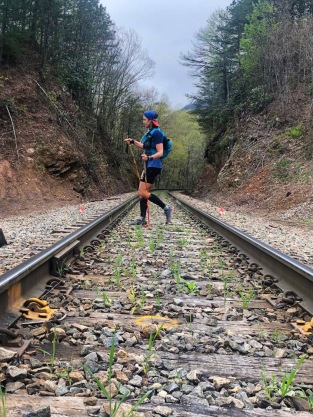It’s always a little difficult to know where to start with these race recaps. Let me start by telling you this race got on my radar when my friend Jenny finished it last year. I knew it was a tough mountain race, and these usually get my attention. I immediately reached out to Brad Scott, who had crewed/paced Jenny, and asked if he would consider helping me next year. Not long after that I found myself in a conversation with Jen Raby and Andy Jones-Wilkins about Grindstone, and let’s say it wasn’t hard to convince me. With Brad and Jenny on board to help, it was very easy to push the register button when the race opened several months later.

If you’re looking for a race report that gives you blow-by-blow details about the course description, the tough climbs, all the rocks, and in general what a grind the race is, you don’t need to read any further. There are lots of other reports full of those details, and I read a few of them myself. Grindstone 100 has a few unique elements that add to the difficulty of the race. I’m a middle to back-of-the-pack runner, and I’ll share more about how I tried to prepare and deal with the challenges I encountered. Keep reading if that interests you.
The year was already lining up to be a little too heavy with 100 mile races for my liking. After having run Hellbender 100 in April, which nearly took it all out of me, I was very apprehensive and nervous about Grindstone. I couldn’t really even focus on it until after my summer of back-to-back races at Tahoe Rim Trail 100 Miler and Badger 100 (in Wisconsin), and then H9 50 Miler (in north Georgia). My coach and I talked while I was recovering from those races. I’d never done back-to-back 100 milers, and I was finding the recovery to be long and slow. I felt like my body wasn’t recovering like I wanted. I’m no longer young and while I usually recover well from races, my schedule may have been too much. All of this made me even more anxious about Grindstone, notoriously one of the tougher races on the East Coast, or as we like to call it, the Beast Coast. Ultra runners on the West Coast often say our trails in the East are much more technical (which means rocky and rooty), and if that’s the case, Grindstone is the Crown Jewel that showcases technical!
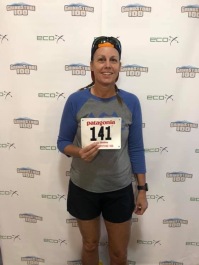
My coach and I allowed my body time to recover at its own pace. I slept a lot, tried to eat well (okay, but it’s summer and I do like ice cream), worked with my PT/trainer each week, had a few massages and another round of dry needling and acupuncture. As the race got closer, I finally got very excited about the race itself, although maybe a little obsessed over how tough it was going to be. Spoiler alert: those fears were well-founded. One of my biggest concerns was the 6:00 pm start time. With a 38-hour cutoff, I was going to be out there for 2 nights. Barely feeling recovered, I wasn’t excited about the evening start. If you’ve been friends with me for a while or followed me for any length of time, you also know this isn’t my first rodeo at 2-nighters. I finished Cruel Jewel in 39 hrs and change, and UTMB in 46 hours. It’s tough. Let’s face it, staying awake and managing running, eating, drinking and fatigue through 2 nights, not to mention staying ahead of cutoffs, can be rough.
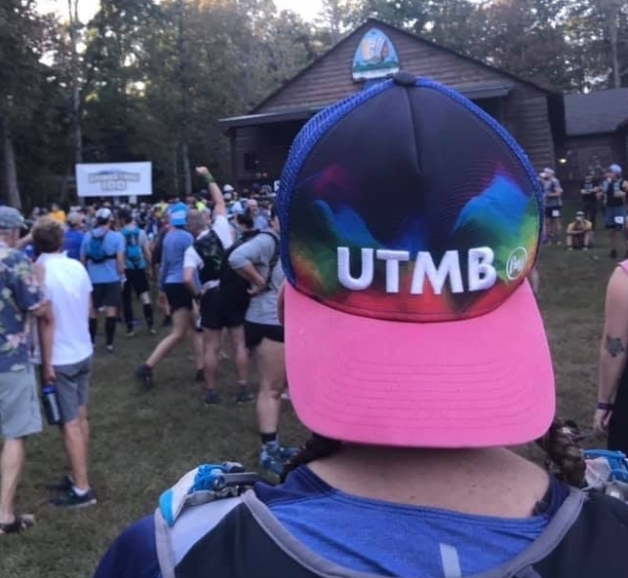
Since I do have a little experience with this lack of sleep thing, let me tell you what I do. It may not work for everyone, but it seems to help me. First, I don’t consume caffeine in my daily life. I drink coffee, but its decaf, so not much caffeine consumption. I’ve changed how I eat and drink during big races, and my plan now is to not drink Coke (which I only do during ultras and it’s my absolute favorite) until the later hours of the race. I had just read an article prior to running Grindstone which discussed 200 mile races and managing sleep. The take-away was to not take in caffeine or sleep the first night of the race and wait until the second night, if possible. Even if this works, it doesn’t reduce how hard it is to stay awake and run through two nights in a row. Again, I think my anxiety about the difficulty of this race was well-founded. I don’t think any 100 miler is easy. There are just too many things that can go wrong and usually do. It’s basically 100 miles of problem-solving. But the less sleep you have, the harder it is to think through and solve those problems.

Brad Scott had crewed and paced me in my very first 100 miler!
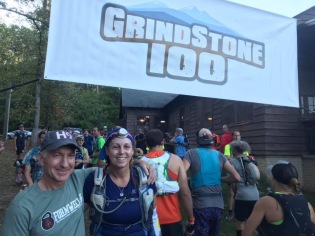
Brad Goodridge helping to keep my nerves under control before the start
Just weeks before the race Jenny told me she was no longer going to be able to help. When I talked to Brad Scott we knew we needed at least one other person. So I want to give a huge shout out and thank you to Brad Goodridge for being there to help me out on very short notice. With my team of Brad Squared in place, my nerves began to settle. I decided to fly to the race to avoid a long driving trip there and back. My pre-race plan was to fly in the morning before, then rest, rest, rest. Eat well, get a good night’s sleep in a comfy bed and rest some more on race morning. Together with my crew, we headed to the campground (where the race started) for the pre-race meal and pre-race briefing. Then with 3 more hours until the start of the race, I crawled into a hammock and stayed off my feet. I even managed a little nap. Runners and crew all gathered for the start, chatting away and taking photos with friends. With a later start time, I knew as soon as the race started my anxiety would settle down.
Let the fun begin! Seriously let’s get this thing get started!
While I did read a few race reports and descriptions of the course, I didn’t memorize details about where the climbs were or their length. I’d looked at the course profile and knew there were many steep ascents and descents. I remembered the first 5 miles were mostly rolling, and after the first aid station would be the first of many big climbs. I also read there would be many false summits. During the entire race, I hung onto that piece of information and never let myself be convinced I was at the top of any climb, because you almost always were not.
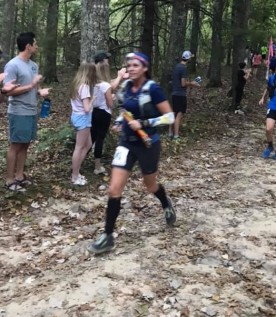
Only 1.5 miles into the my crew sees me go through the camp ground
I enjoyed the first 90 minutes of daylight and getting through the first aid station, but on the first steep climb I was seriously questioning myself. I was already struggling on the climbs. My breathing was heavy and I felt like I was so slow. After reaching the top of an out-and-back on Elliott Knob, where you punch your bib, you come back down and hit single track trail. I finally felt more comfortable and settled into a steady pace. I always found myself around other runners and I enjoyed chatting with them. That made the night hours and climbs pass quicker. I came into the first aid station where I saw my crew at Dowells Draft mile 22, and I was running happy. I had settled in, found my pace, and was nowhere close to the cutoff times, and I was quickly off again. It would be another 15 miles and a few more mountains to climb before I would see my crew again.
Knowing this race would most likely take me two nights to complete, it meant 24 of the 38 hours could be in the dark. I felt that a good waist light would be a huge help and a worthwhile investment. I have a Petzl Headlamp that I love and it’s very bright, but I get tired of wearing something on my head. I purchased an UltrAspire 800 lumens waist light and had taken it out a few times before Grindstone to test it. It uses rechargeable batteries, so I tested how long they would last, and how I could get them to my crew to charge them between aid stations where I saw them. Being able to see well at night, especially over very technical terrain, turned out to be a huge help.
I came into mile 37 and found my crew in the car, thinking they had just missed me, but they quickly helped me get what I needed before I began one of the longest climbs on the course. Brad Scott, who had crewed this race the 3 previous years and knew the course, made sure I changed into dry clothes. It was still several hours before daybreak but he also knew it would be much colder up where I was headed. He was right, so it was a great call on his part. I also knew I had not been eating well. I made it a point to sit there and get lots of food in me before leaving. Mentally, I was well prepared for the climb ahead as I had been told by another runner how long and steep it would be. Again, I knew there would be false summits, so I kept that in mind as well. After finally grinding it out to the top of that long, endless climb and getting to the next aid station, daylight came and I began seeing the front runners heading back towards the finish. I got to greet many of my other friends who were running and we encouraged each runner as we passed. It was now only 6 more miles to the turnaround where I would pick up Brad Scott to pace me.
Brad started pacing me at the turnaround
It was indeed colder, foggy and windy at the top and the location of the turnaround aid station. It was nice to now have company and be able to chat and catch up on the day. It was also a huge help to just have someone there to encourage me that I would make it. The thought of getting close to cutoffs was not how I wanted this race to play out. I’ve learned that 100 mile races with cutoffs over 30 hours means it’s hard and you need the extra time. I just wanted to finish this thing, but I also wanted to have a goal. With a 38 hour time limit, I gave my crew a pace chart using a 34 hour pace. I thought that might be a bit out of reach for me but would be very happy to just finish. Having Brad assure me that I was on a good pace even though I felt I was still sucking on the climbs was a huge mental boost for me. It seemed like we got back to the 65 mile aid station in no time and we saw Brad Goodridge, who was now crewing both of us.
We enjoyed nice views during the day
I’d like to think that I’m easy to crew for, but in a 100 mile race where you are up for two days and your crew is also, everyone gets tired. I have a large “crew” bag for any possible supplies (and probably too many things) I might need. I’d say most of the time I don’t need much of it, but I try to come into the aid station, sit down with my bag and take care of things and get what I need. Sometimes it might be a change of shoes, clothes, new batteries, etc. I try to be as self-sufficient as I can, but it’s nice to get help from my crew digging through the bag to find all the stuff I need, or take care of my pack. In any 100 mile race, and especially a long one like this, you have to remember your crew is probably very tired and cold, as well. Crewing is not an easy job. The aid stations at Grindstone were all extremely well run with great volunteers. They were always quick to offer their help in filling your pack, getting you food or drink, and were very good at telling you how far to the next aid station and what to expect ahead. They also made sure you didn’t sit around too long. At this point in the race, I pretty much knew each section ahead started with a long climb, so I eventually quit asking them what to expect.
At this aid station I knew I wanted to change shoes. Usually my plan is to not change shoes unless I have problems with my feet. My feet felt really good, but I knew the later miles in the course would be rockier. So my plan was to switch from my Altra Timps to a more cushioned shoe, the Altra Olympus. Another really good call. Soon, Brad Scott and I were off again, heading over the next mountain and 15 more miles before seeing Brad Goodridge again. After a lot of good climbing, another aid station, and more long climbs, we finally had some great downhill running. It was dark, and Brad and I enjoyed the game of “catching the carrot.” We would see the lights of other runners ahead and would keep moving strong until we caught and passed them. We played this game the rest of the race, chasing down and passing people over the final 35 miles. I didn’t feel like I was climbing strong, but I was climbing steady. I wasn’t stopping and I wasn’t slowing down. Now into the second night, I was taking caffeine and for the most part not struggling to stay awake. If I can keep moving at a decent pace, I usually stay more awake and focused.
We came into the Dowells Draft aid station at mile 80 to be greeted by not only Brad Goodridge but several other friends who were now helping out at this location. Shannon Howell and Kelly Boone waited on me, getting me food and helping me take care of things. We were out of there quickly with their help. Thank you! It was still quite a long way to the finish but began to feel closer. The aid stations at Grindstone are all a little further apart than many 100 milers, between 7-9 miles. With the long climbs in between, it would take some time. All I could do was follow Brad and just keep grinding it out. Oh look, there’s another “carrot!” We were both starting to feel the lack of sleep creep up on us but we tried not to focus on that. We finally made it to the mile 87 aid station, but I don’t remember what I did or needed. All I remember was Brad Goodridge telling me there was just one more aid station. It sounded so close but I still had 14 miles to go, and it would include a very rocky technical section.
As we made our way up Crawford Mountain, it became very foggy. The fog made it hard to see, it was misting, and the wind was picking up. We tried not to think about it as we worked our way across the very unstable rock sections. We heard what sounded like large branches crash down and my heart started racing. We were now on a new mission to get off this mountain and into the aid station. Just as we turned onto the Chimney Hollow trail and had only 2.5 miles to the aid station, Brad told me his kidney had been hurting for maybe 8 miles or so. Wow! I wasn’t expecting that. There was another runner with us who had been struggling to follow the course, and he happened to be an ER doctor. We surmised that Brad may have been dealing with a kidney stone, although Brad hoped it was just sore from getting jarred on the rocky sections. Nearing the aid station he kept stopping and even went to the ground on his knees, waiting for the pain to subside. I felt so bad for him, knowing that my husband Ed had dealt with a kidney stone just 4 weeks ago. I knew it was painful, if that’s what he had. I also knew he wouldn’t be able to pace me to the finish. As long as Brad was okay, I was totally good with getting myself to the finish. I came into the aid station and told Brad Goodridge what was going on, and that Brad was not far behind me. I quickly got what I needed as Brad Scott came in, leaving him in good hands I headed out for the final 5 mile section.
This last section was not marked, however. You followed white markings on the trees until you got back to the campground and then followed pink flagging to the finish. When we started the race it was daylight and following the runners in front of us was easy. It wasn’t as easy to follow the white markings in the dark, with no one leading the way. The ER doctor, Mike, came out of the aid station right behind me. Brad Goodridge had loaded the course onto the All Trails app on my phone before the race. The app was now very helpful to make sure we stayed on the course. Mike and I shared the last five miles together and crossed the finish line in 35:16. Brad Goodridge told me afterwards that I had come into each aid station right on my goal pace. I had no idea I was even close to it, as I always felt like I was struggling.

Doc Mike and I at the finish!
I know for sure I could have never finished Grindstone without the help of Brad Squared! It’s a tough race with lots of things that make it challenging. Having experienced crew was very helpful for me and a big part of my finish. My love for this sport is all about the friends I’ve made along the way and the trails I share with them.

Couldn’t have done it without these two! Thank you!
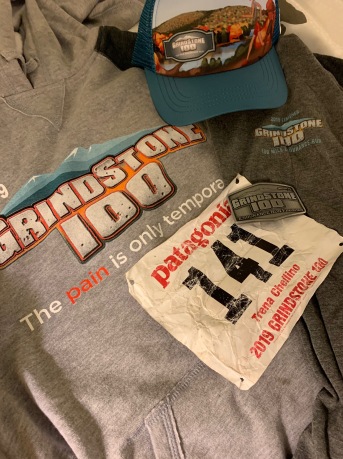
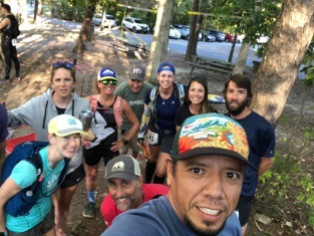



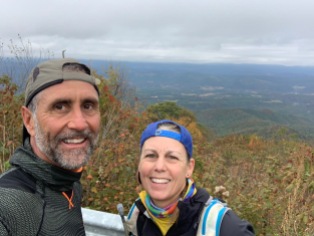


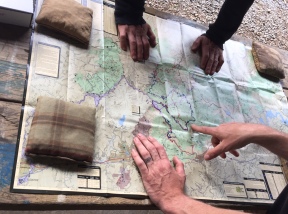
 Almost time to get this started
Almost time to get this started Summit of Pinnacle but no view
Summit of Pinnacle but no view

 Mt Mitchell Summit and not quite so cold
Mt Mitchell Summit and not quite so cold